When you think of capybaras, you probably picture these gentle giants lounging by the water, looking like oversized guinea pigs. But have you ever wondered about their teeth? Capybara teeth are a fascinating blend of strength, adaptability, and evolutionary brilliance. Whether you’re a capybara enthusiast, a pet owner, or just curious about these unique rodents, this article dives deep into everything you need to know about capybara teeth.
Why Capybara Teeth Are a Big Deal
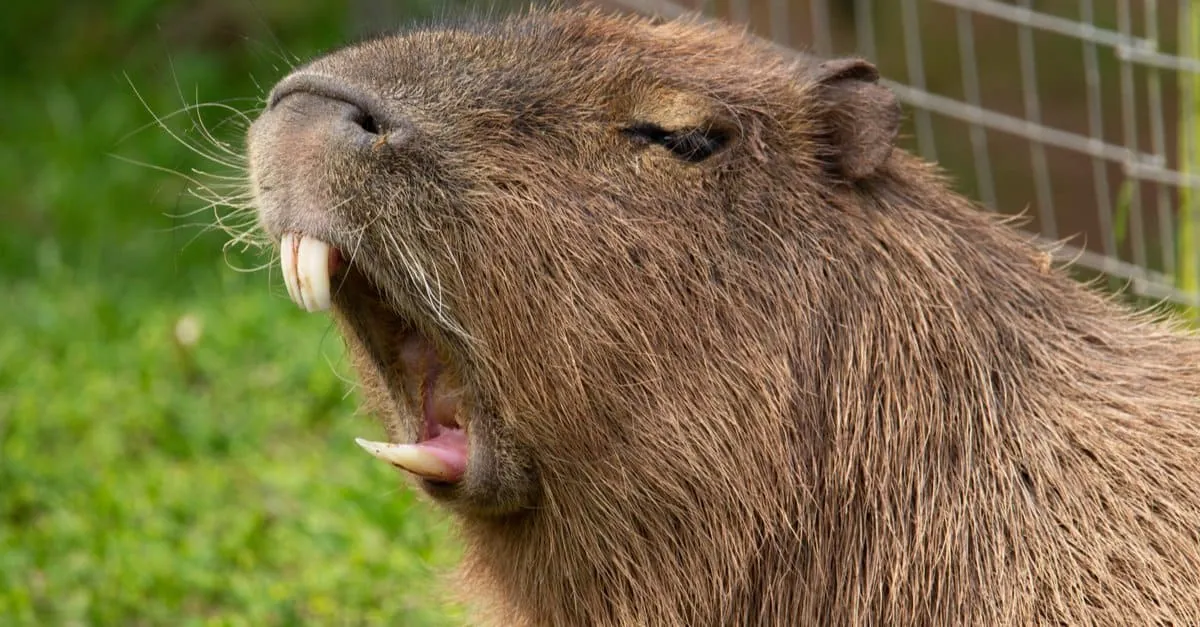
Capybaras are the world’s largest rodents, and their teeth are no exception to their impressive biology. Unlike humans, capybara teeth never stop growing. This continuous growth is a survival mechanism, allowing them to handle their tough, fibrous diet of grasses, aquatic plants, and bark. But what makes their teeth truly remarkable? Let’s break it down.
The Anatomy of Capybara Teeth
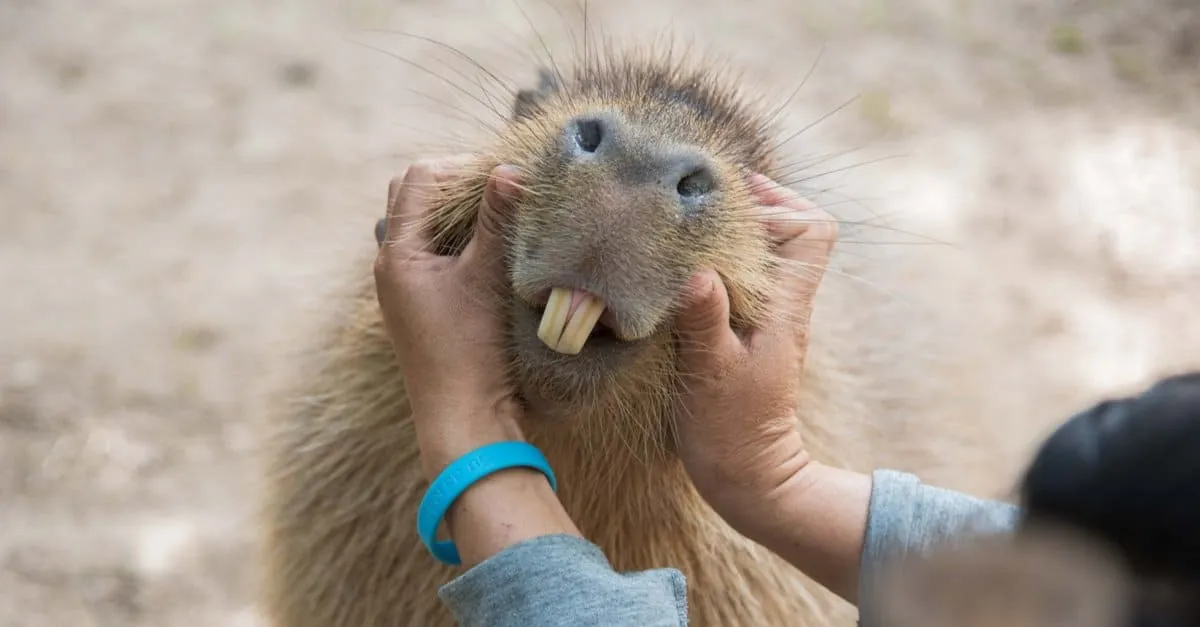
How Many Teeth Do Capybaras Have?
Capybaras have a total of 20 teeth, which include:
- 4 sharp incisors (2 upper, 2 lower)
- 4 premolars
- 12 molars
These teeth are perfectly designed for their herbivorous lifestyle. The incisors are sharp and chisel-like, ideal for cutting through tough vegetation, while the molars are broad and flat, perfect for grinding food into digestible pieces.
The Secret Behind Continuously Growing Teeth
Capybara teeth grow continuously throughout their lives, a trait known as hypselodonty. This is common among rodents but takes on a whole new level of importance for capybaras. Their teeth can grow up to 6 inches annually, ensuring they always have sharp, functional tools for their diet.
How Capybaras Keep Their Teeth in Check
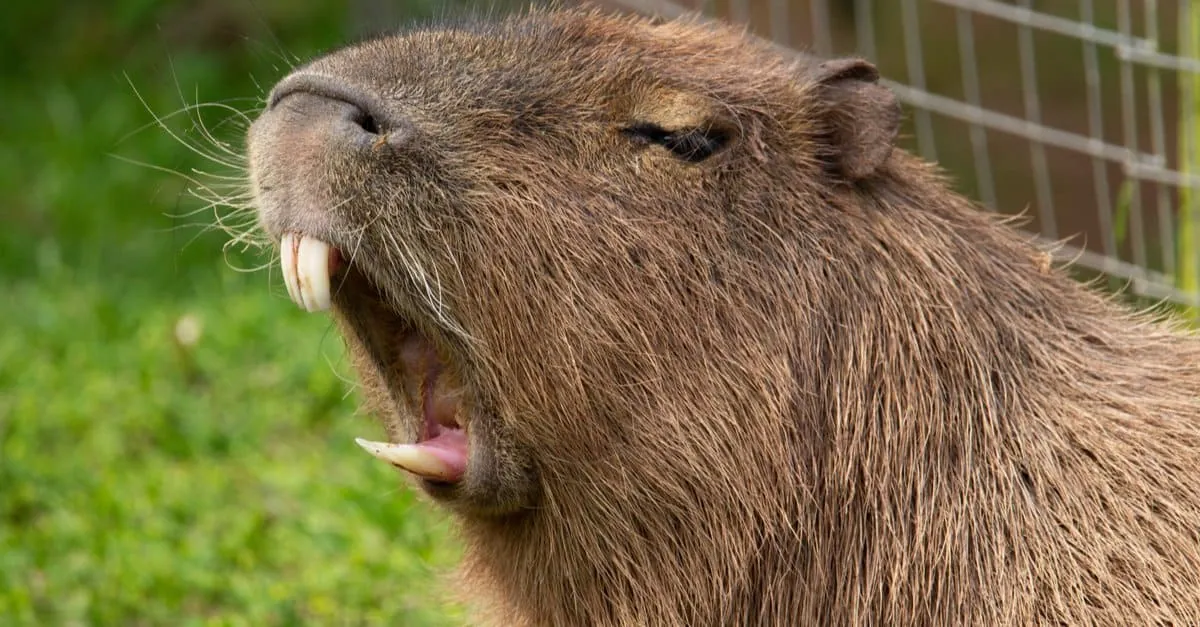
Chewing: Nature’s Dental Plan
Capybaras spend up to 8 hours a day chewing on grasses, twigs, and bark. This constant grinding wears down their teeth, preventing overgrowth. In the wild, they rely on natural materials like stones and tree bark to keep their teeth at a manageable length.
What Happens If Their Teeth Overgrow?
Overgrown teeth can lead to serious health issues, including difficulty eating, malnutrition, and even infections. In captivity, it’s crucial to provide capybaras with chew toys and a diet rich in fibrous plants to mimic their natural wear patterns.
The Science Behind Capybara Teeth
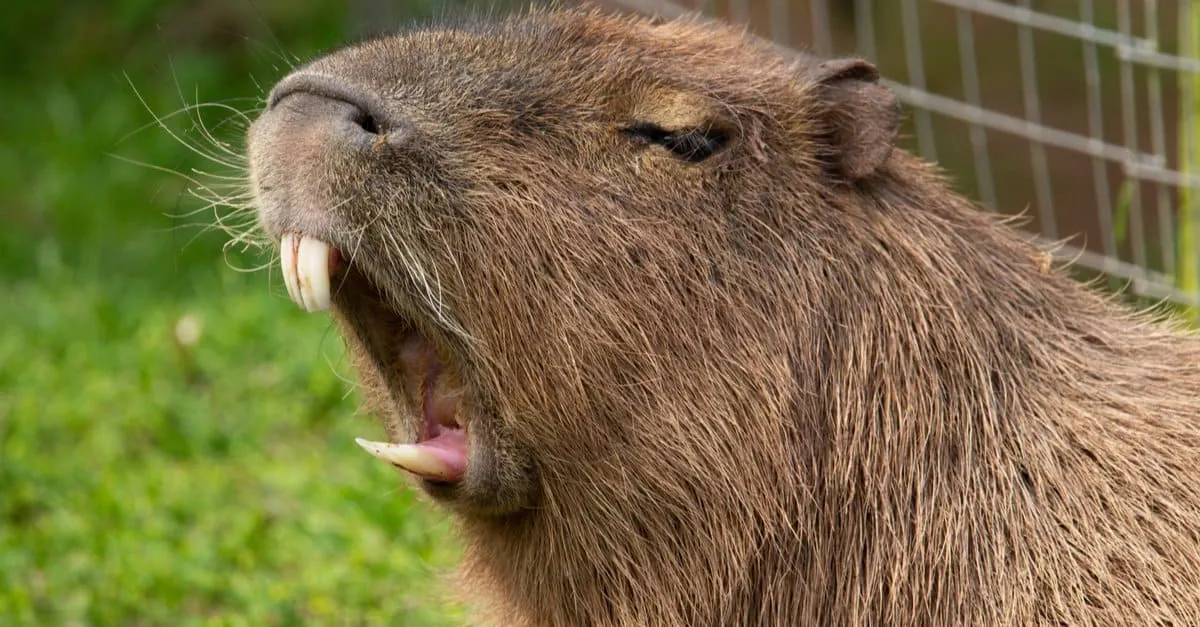
Self-Sharpening Incisors
Capybara incisors are a marvel of nature. The front of the tooth is covered in hard enamel, while the back is made of softer dentine. As they chew, the softer back wears down faster, creating a sharp, chisel-like edge. This self-sharpening mechanism ensures their teeth remain effective tools for cutting through vegetation.
Molars: The Grinding Powerhouses
The molars of capybaras are designed for grinding tough plant material. Their occlusal surfaces (the biting surfaces) have complex ridges and cusps that change over time, optimizing their ability to process fibrous foods.
Common Dental Issues in Capybaras
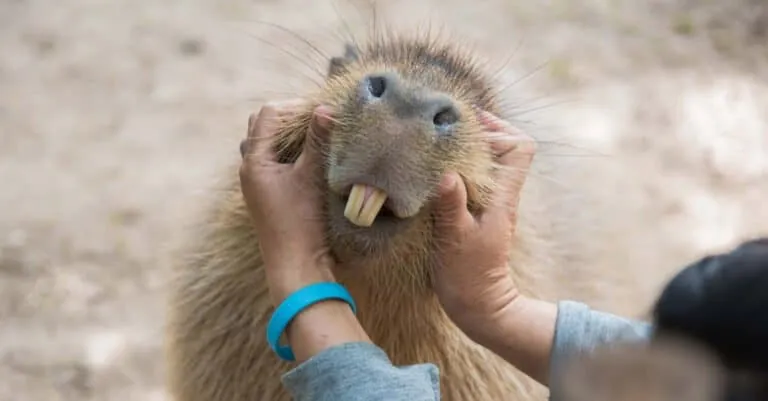
Overgrown Teeth
One of the most common dental problems in capybaras is overgrown teeth. Without proper wear, their teeth can grow too long, leading to malocclusion (misalignment) and difficulty eating.
Dental Abscesses and Erosion
Continuous chewing on abrasive materials can sometimes lead to dental erosion or abscesses. These issues can cause pain and discomfort, affecting the capybara’s overall health.
How to Care for a Capybara’s Teeth
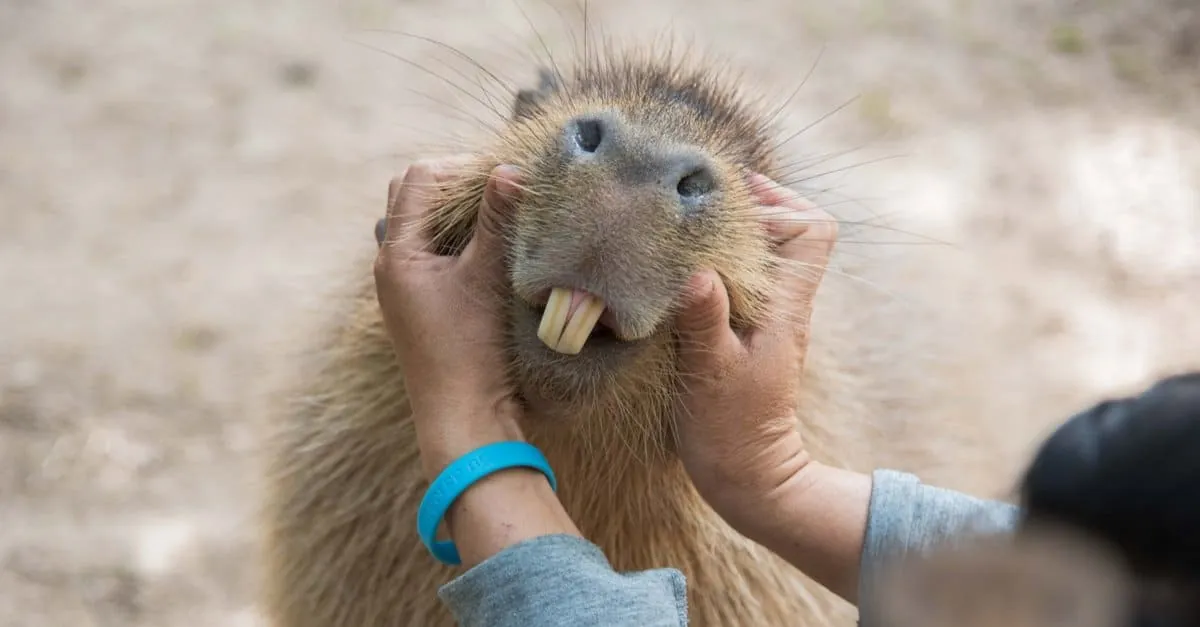
Diet: The Foundation of Dental Health
A capybara’s diet should be rich in hay, grasses, and fibrous vegetables. These foods not only provide essential nutrients but also help wear down their teeth naturally.
Chew Toys and Enrichment
In captivity, providing safe chew toys and branches from non-toxic trees can help keep their teeth healthy. Regular veterinary check-ups are also essential to monitor their dental health.
Fun Facts About Capybara Teeth
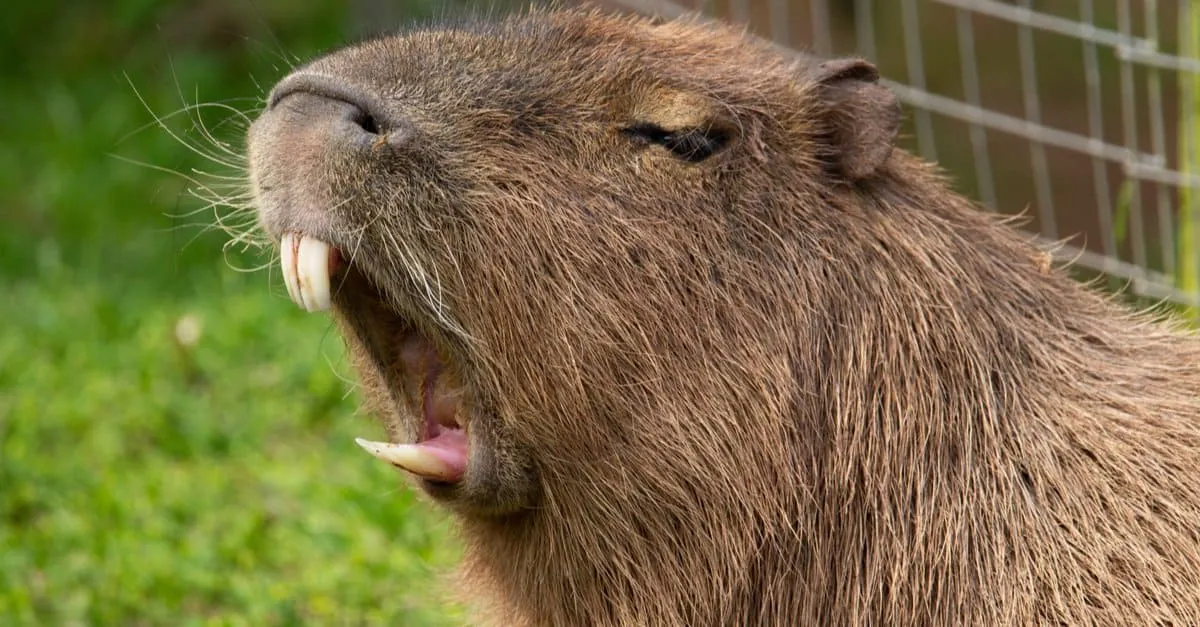
- Capybaras are born with their eyes open, fur, and a full set of teeth, ready to graze alongside adults.
- Their incisors can grow up to 8 centimeters if not worn down.
- Capybaras have a bite force of 77 to 145 Newtons, making their teeth as sharp as they look.
FAQs About Capybara Teeth
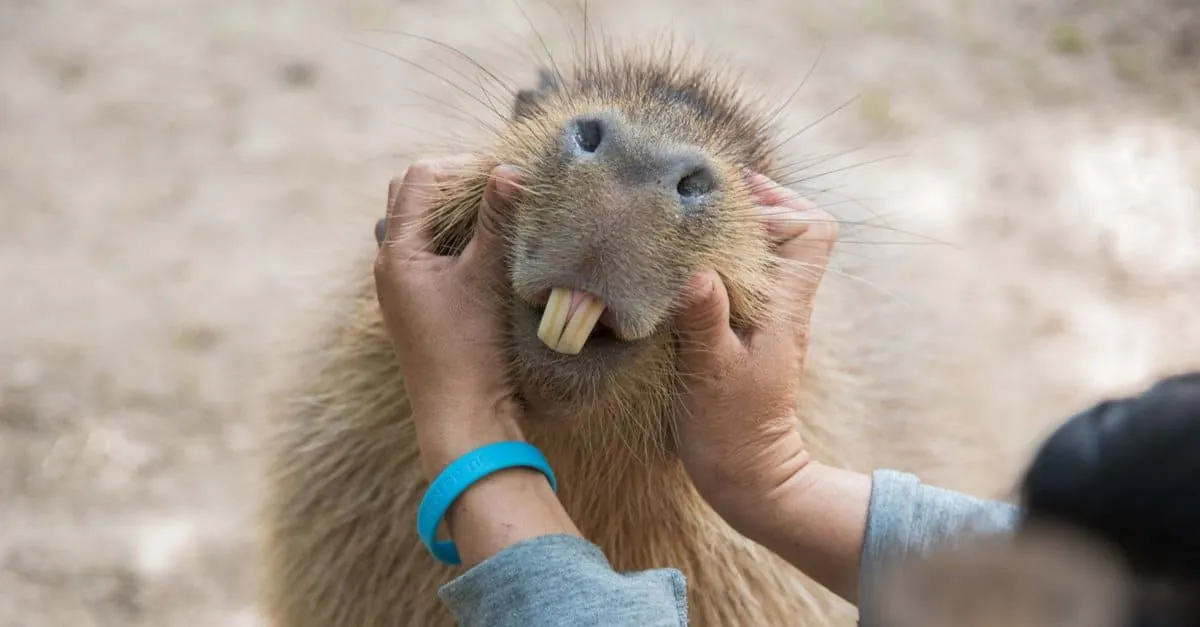
1. Do capybara teeth ever stop growing?
No, capybara teeth grow continuously throughout their lives. This is why they need to chew constantly to keep them at a manageable length.
2. What happens if a capybara’s teeth overgrow?
Overgrown teeth can cause difficulty eating, malnutrition, and other health issues. Regular dental care and a proper diet are essential to prevent this.
3. Are capybara teeth sharp?
Yes, their incisors are extremely sharp, thanks to their self-sharpening mechanism. This allows them to cut through tough vegetation with ease.
4. How do capybaras keep their teeth short in the wild?
In the wild, capybaras chew on grasses, bark, and stones to naturally wear down their teeth.
Final Thoughts: The Marvel of Capybara Teeth
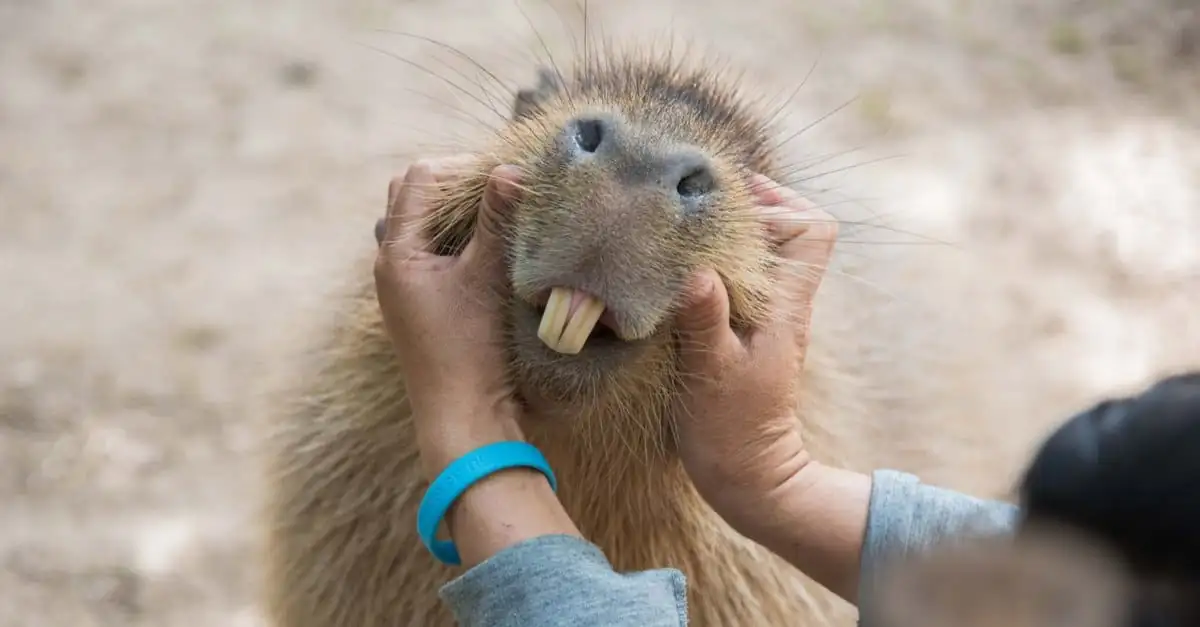
Capybara teeth are a testament to nature’s ingenuity. From their continuously growing incisors to their self-sharpening mechanism, every aspect of their dental anatomy is perfectly adapted to their herbivorous lifestyle. Whether you’re a capybara owner or just fascinated by these gentle giants, understanding their teeth gives you a deeper appreciation for their unique biology.
So, the next time you see a capybara munching on grass, remember: those teeth are more than just tools for eating—they’re a survival masterpiece.
Keywords: capybara teeth, capybara dental health, capybara teeth care, capybara teeth anatomy, capybara teeth facts
LSI Keywords: rodent teeth, continuously growing teeth, capybara diet, capybara chewing habits, capybara incisors, capybara molars
